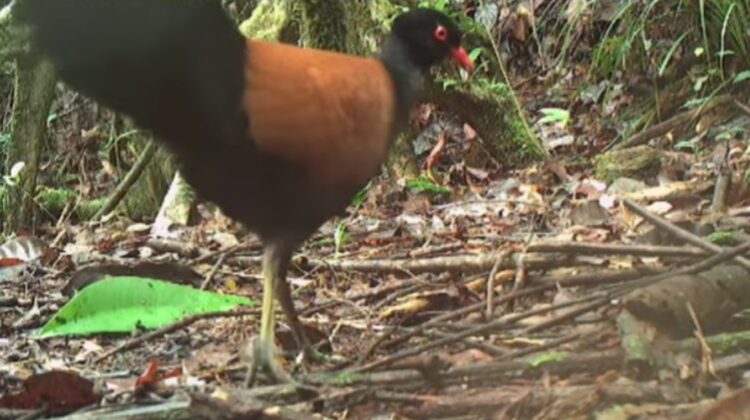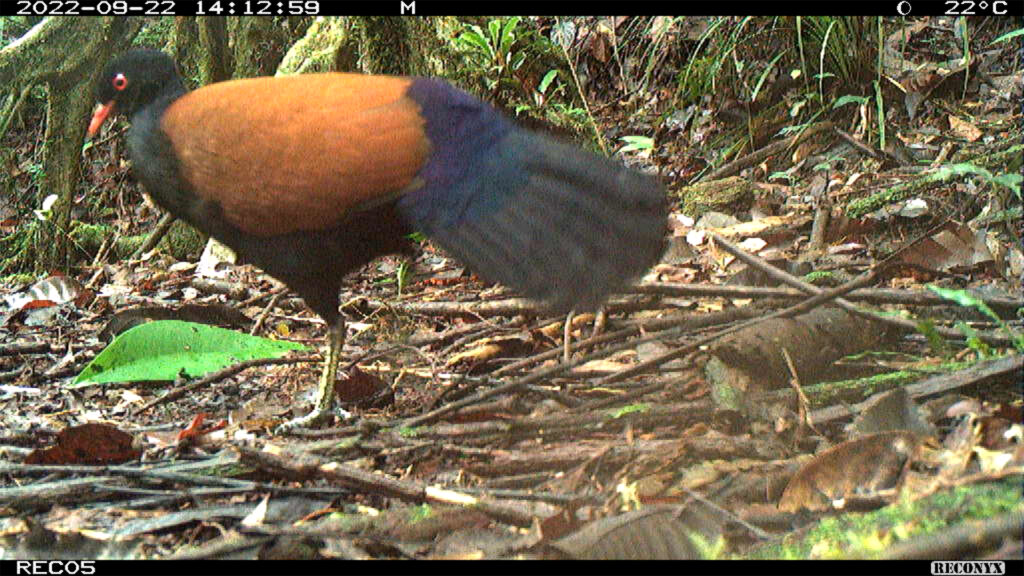
The first-ever pictures and videos of the black-naped pheasant-pigeon were taken during an expedition to Papua New Guinea.
It’s comforting to know that animals once believed to be extinct occasionally make a comeback in a world where we constantly hear about extinctions and endangered species.

Consider the black-naped pheasant-pigeon, which hasn’t been spotted in more than 140 years despite being first described in the late 19th century. The American Bird Conservancy reports that a team with the Search For Lost Birds was able to film the bird on Fergusson Island, a rugged island in the D’Entrecasteaux Archipelago off of eastern Papua New Guinea.
The researchers’ still images and motion pictures represent the bird’s first scientifically verified documentation since 1882. Although little is known about the species by ornithologists, they do think that Fergusson has a small and declining population.
After a month-long search on Fergusson, the team used a remote camera trap to capture the pheasant-pigeon.
Jordan Boersma, postdoctoral researcher at Cornell University and co-leader of the expedition team, estimated that there was a less than one percent chance of capturing a photo of the black-naped pheasant-pigeon when we collected the camera traps. Then, as I scrolled through the pictures, I was astounded by the picture of the bird flying directly in front of our camera.
After a month of looking, John C. Mittermeier, Director of the Lost Birds program at ABC and expedition co-leader, said, “Seeing those first photos of the pheasant-pigeon felt like finding a unicorn. As a conservationist and birdwatcher, “it is the kind of moment you dream about for the rest of your life.”
Early in September 2022, the expedition team set out for Fergusson. Over the next month, they traveled the island, speaking with locals to determine the best places to set up camera traps in an effort to locate the pheasant-pigeon. The steep, mountainous terrain on Fergusson Island made the search process very difficult.

According to conservation biologist and expedition co-leader Jason Gregg, “We didn’t start meeting hunters who had seen and heard the pheasant-pigeon until we reached villages on the western slope of Mt. Kilkerran.” “We felt like we were getting closer to the core habitat of the black-naped pheasant-pigeon and we became more confident about the local name of the bird, which is “Auwo.”
Finally, a local hunter gave an important tip about where to look for the bird. He informed the group that he had repeatedly observed the pheasant-pigeon in a region with sharp ridges and valleys. The distinct calls of the bird were also mentioned by him.

The team set up camera traps at the designated location, where they discovered dense forest, as per the hunter’s advice. The black-naped pheasant-pigeon was finally photographed on the forest floor as part of the first-ever camera trapping study carried out on Fergusson Island. The camera was installed on a ridge at a height of 3,200 feet (1,000 meters) above Duda Ununa, close to the Kwama River. In just two days, the team was supposed to depart the island.
Doka Nason, who was part of the team that set up the camera trap that eventually captured images of the lost bird, said, “When we finally found the black-naped pheasant-pigeon, it was during the final hours of the expedition.” “I was so excited when I saw the photos.”

According to the researchers’ findings, the pheasant-pigeon is probably very uncommon. Given that their habitat is shrinking, the untamed, inaccessible forest where they found the species again may be their last refuge on the island.

Leave a Reply